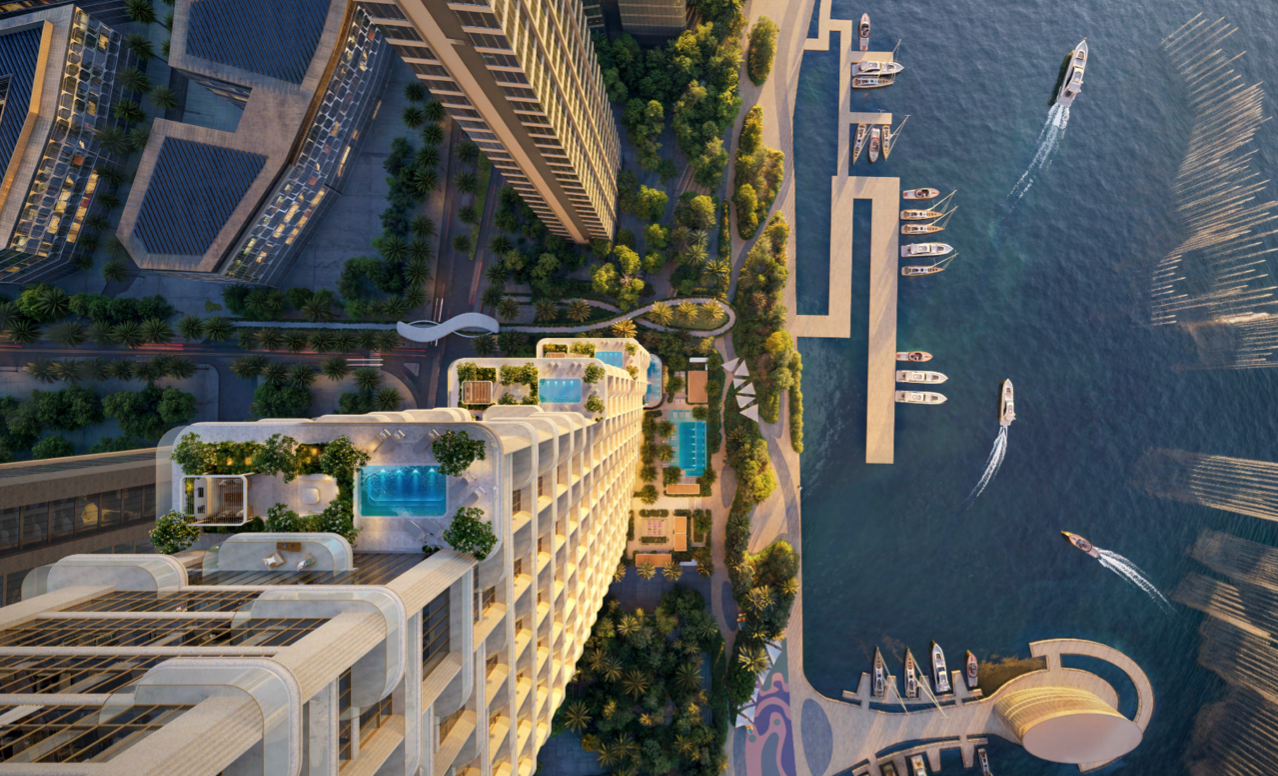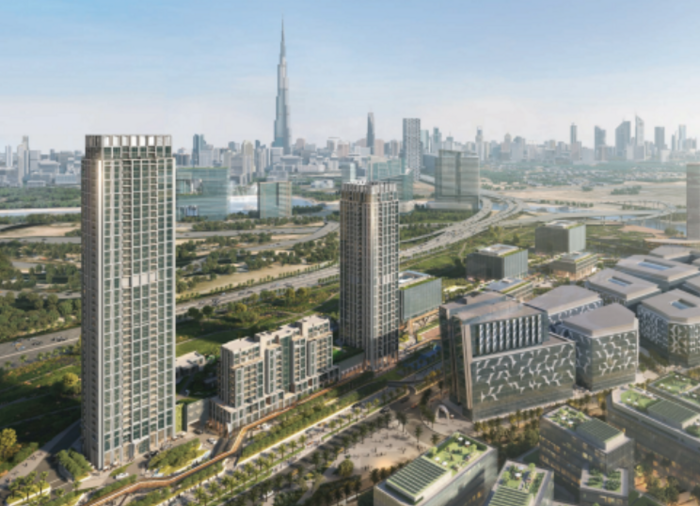D3 - DUBAI DESIGN DISTRICT
NEW COMMUNITY
LAUNCHES:

ATELIS
Av.Starting PRICE: 3'000 AED/sqft, Available SIZEs from 900 sqft in 1-BR, PP: 75/25, HO Q3 2029

DESIGN QUARTER
Av.Starting PRICE: 3'200 AED/sqft, Available SIZEs from 822 sqft in 1-BR, HO: Q2 2027, PP: 60/40
Dubai Design District (d3): Analytical Investment Perspective
Dubai Design District (d3) is positioned as a hub for the creative economy, catering to design, fashion, tech, and cultural industries. Its strategic location near Downtown Dubai and Business Bay, combined with a mixed-use urban environment, makes it a distinctive investment option. Below is an analytical breakdown of its pros and cons for investors.
Pros
Prime Location: d3 is centrally located, offering quick access to Downtown Dubai, Business Bay, and Dubai International Airport, enhancing its appeal for both residents and businesses.
Creative and Focused Community: The area attracts a stable, targeted demographic of young professionals, entrepreneurs, and creative companies, ensuring a consistent rental audience and vibrant atmosphere.
Mixed-Use Development: With a blend of residential, commercial, and leisure spaces, d3 provides portfolio diversification and flexibility for investors seeking exposure to different property types.
Event-Driven Visibility: Frequent art, fashion, and tech events keep the district lively and in the public eye, supporting demand for both residential and commercial properties.
Government Backing and Innovation: d3 benefits from strong government support, integration with Dubai’s innovation agenda (such as the D33 plan and AI initiatives), and free zone status, making it attractive for international businesses and startups.
Promising ROI: Rental yields in d3 average between 7% and 9%, with medium- to long-term capital appreciation potential as the district matures and gains recognition as a residential address.
Cons
Developing Residential Infrastructure: While d3 is established as a creative and business hub, its residential amenities and services are still expanding, which may affect appeal for some end-users in the short term.
Premium Pricing: Property and rental prices are relatively high due to the district’s specialized nature and amenities.
Development Phase: Some areas within D3 are still under development, which may affect immediate occupancy or returns.
Summary Table
| Factor | Pros | Cons |
|---|---|---|
| Location | Central, near Downtown and Business Bay | – |
| Community | Targeted, creative professionals and businesses | Niche appeal, smaller tenant/buyer pool |
| Property Mix | Mixed-use: residential, commercial, leisure | Limited residential supply yet |
| ROI | 7–9% rental yields, capital appreciation potential | Residential growth still developing |
| Market Dynamics | Frequent events, strong government and innovation support | Challenges in scaling production and infrastructure |
| Investment Flexibility | Free zone status, attractive for startups and international investors | May not suit traditional or family-oriented investors |
Conclusion
From an investment perspective, Dubai Design District offers strong medium- to long-term potential, especially for those targeting the creative economy and seeking diversification beyond traditional residential areas. Its central location, government support, and vibrant community are major strengths, but investors should be mindful of the limited residential inventory, niche market focus, and evolving infrastructure. For those aligned with d3’s creative vision, the district represents a compelling opportunity with robust rental yields and future upside.